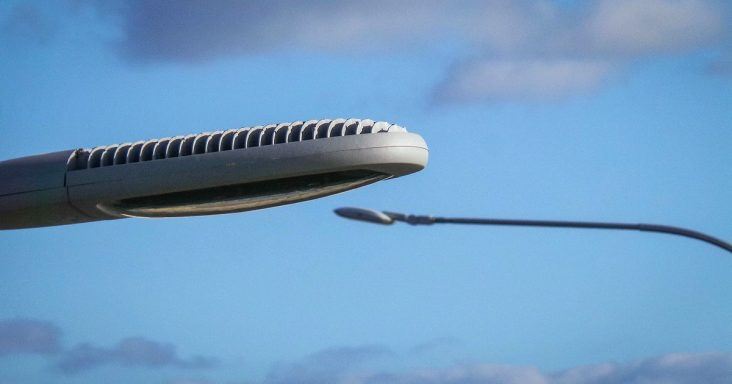Ozarks Electric to install LED bulbs in streetlights of Fayetteville subdivision
by October 3, 2017 9:45 am 462 views

Photo credit: Theen Moy
Fayetteville will collaborate with Ozarks Electric Cooperative on a pilot program to install LED bulbs in streetlights, as part of the city’s efforts to decrease energy consumption, according to a news release. Ozarks Electric will replace bulbs in 16 streetlights of the Willow Springs subdivision in west Fayetteville.
The two-month pilot program starts in early October and will measure energy costs, illumination levels and resident perception. Residents in the area of the program will have an opportunity complete two surveys conducted by Ozarks Electric — one before the bulbs are installed and one after. Questions will regard perceived safety, light brightness and quality. Survey results will help to determine whether existing lights will be replaced with LED bulbs throughout the city.
LED bulbs are more expensive than the existing high-pressure sodium and mercury vapor light bulbs, but they use about half as much electricity and last nearly twice as long. They also decrease carbon emissions and maintenance costs, and studies show they produce a light “considered better and more natural,” according to the release.
Streetlights cost the city between $3 and $10 per light per month, and the annual lighting bill for the lights is about $350,000. Some streetlights are owned by neighborhood organizations, but the majority are owned and maintained by the city, Ozarks Electric or Southwestern Electric Power Co. (SWEPCO).
Kris Williams, manager of energy services for Ozarks Electric, was excited about collaborating with the city and looked forward to learning more about customer needs. “Anything we can help do to reduce carbon emissions is important to us as a cooperative, and we hope we are able to help the city with something that can potentially make a huge long-term effect,” Williams said.
Peter Nierengarten, sustainability director for Fayetteville, was appreciative of Ozarks Electric’s willingness to work with the city on the pilot program. “It’s a social, environmental and economic win, if we can reduce electricity consumption and carbon emissions without sacrificing light levels and safety,” Nierengarten said.
